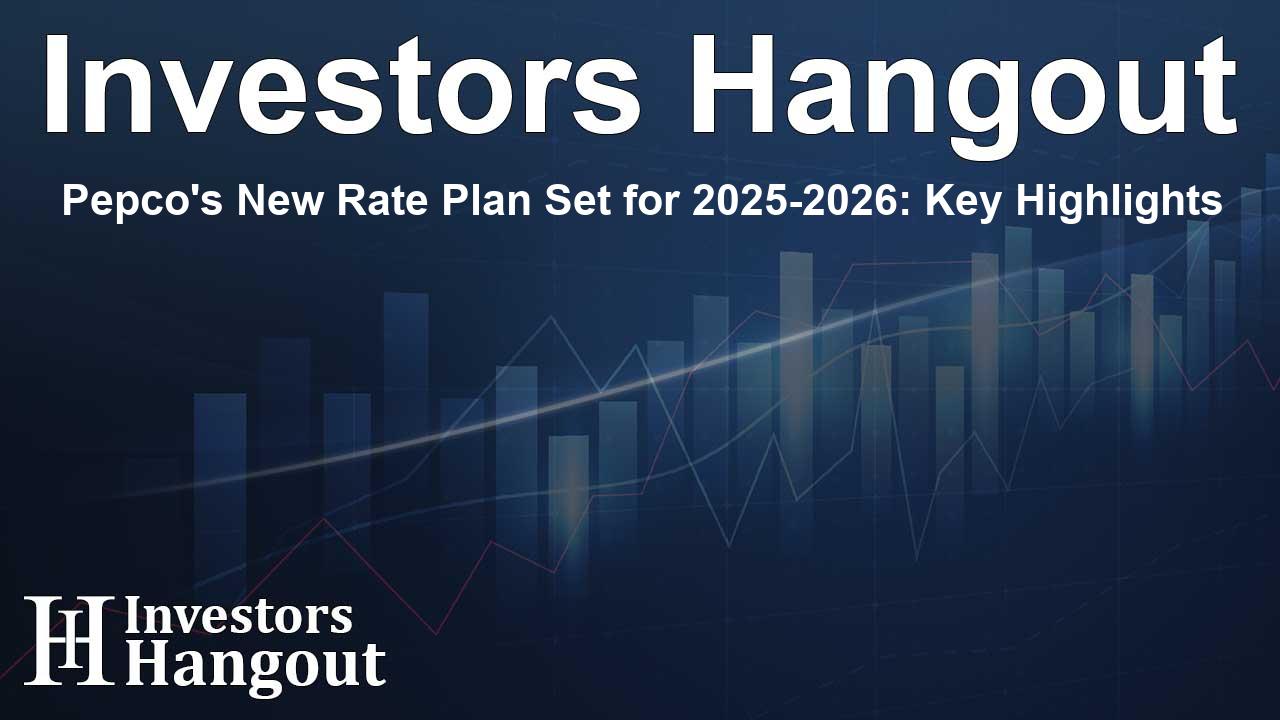Pepco's New Rate Plan Set for 2025-2026: Key Highlights

Overview of Pepco's Modified Rate Plan
The Public Service Commission of the District of Columbia has recently voted to approve a revamped version of Pepco's second Multiyear Rate Plan (MRP). This plan is set to be implemented on an extended pilot basis for the electric distribution service. The decision enhances the existing framework by ensuring accountability and bolstering consumer protections.
Rate Adjustments and Financial Oversight
Under the new plan, Pepco can raise its electric distribution rates by $123.4 million over the next two years. This figure significantly trims its initial proposal of $190.7 million by 35%, indicating a thoughtful approach to rate adjustments. The plan introduces regular oversight measures, including quarterly reports detailing the Rate of Return and annual reconciliations. This structured accountability aims to maintain transparency in Pepco’s financial dealings.
Customer Protections and Incentives
One of the noteworthy aspects of the approved plan is the assurance of stability for low-income customers enrolled in the Residential Aid Discount (RAD) program. Their electric distribution service rates will stay unchanged, effectively shielding them from the increase. Such measures are critical in ensuring that vulnerable populations continue to receive essential services without added financial burdens.
Revenue Distribution Changes
The restructuring entails a deliberate method of revenue allocation. About 41% of the new revenue increase is earmarked for residential classes, translating into slightly increased charges of $1.00 per month for residential customers in both 2025 and 2026. Consequently, average bills will rise by around $7.54 in 2025 and $3.80 in 2026, allowing customers to budget more effectively for their electricity costs.
Regulatory Developments for Future Growth
The Commission’s decision outlines specific adjustments in revenue allocation and emphasizes essential reforms aimed at fostering future utility performance. The implementation of a 9.50% return on equity and rates of return of 7.28% for 2025, and 7.29% for 2026, establishes a robust framework for Pepco’s financial health. Additionally, a notable cut of $211 million in requested capital expenditures signals a strict approach towards efficient resource management.
Consumer Advocacy and Educational Initiatives
In light of this renewed focus on consumer safeguards, the Commission plans to enhance its educational initiatives. By forming the Utility Discount Program Education Working Group, they will work towards expanding the RAD program, further enabling low-income households to qualify for free electric distribution services. Approximately 20,000 households currently benefit from such support, and expanding these programs could significantly increase community access.
Conclusion: Ensuring Balance between Investment and Ratepayer Needs
Chairman Emile Thompson expressed the Commission's balanced approach to investment recovery and rate increases. The decision reflects a commitment to maintaining the integrity of the electric distribution system while also protecting consumers. This dual focus is vital for promoting future investments and ensuring reliable service delivery to all customers.
Frequently Asked Questions
What is the main objective of Pepco's modified rate plan?
The primary goal is to ensure consumer protection while allowing for investment recovery in the electric distribution system.
Will low-income customers see any changes in their rates?
No, low-income residents enrolled in the RAD program will continue to receive free electric distribution service.
How much can Pepco increase its rates under the new plan?
Pepco is allowed to increase its electric distribution rates by $123.4 million over the two years of the program.
What measures are included for financial oversight of Pepco?
Pepco will need to file quarterly Rate of Return reports and annual reconciliation reports detailing expenditures.
How does the new plan affect the average residential customer?
The average residential customer's bill will increase by $7.54 in 2025 and $3.80 in 2026 due to the new rate changes.
About Investors Hangout
Investors Hangout is a leading online stock forum for financial discussion and learning, offering a wide range of free tools and resources. It draws in traders of all levels, who exchange market knowledge, investigate trading tactics, and keep an eye on industry developments in real time. Featuring financial articles, stock message boards, quotes, charts, company profiles, and live news updates. Through cooperative learning and a wealth of informational resources, it helps users from novices creating their first portfolios to experts honing their techniques. Join Investors Hangout today: https://investorshangout.com/
Disclaimer: The content of this article is solely for general informational purposes only; it does not represent legal, financial, or investment advice. Investors Hangout does not offer financial advice; the author is not a licensed financial advisor. Consult a qualified advisor before making any financial or investment decisions based on this article. The author's interpretation of publicly available data shapes the opinions presented here; as a result, they should not be taken as advice to purchase, sell, or hold any securities mentioned or any other investments. The author does not guarantee the accuracy, completeness, or timeliness of any material, providing it "as is." Information and market conditions may change; past performance is not indicative of future outcomes. If any of the material offered here is inaccurate, please contact us for corrections.